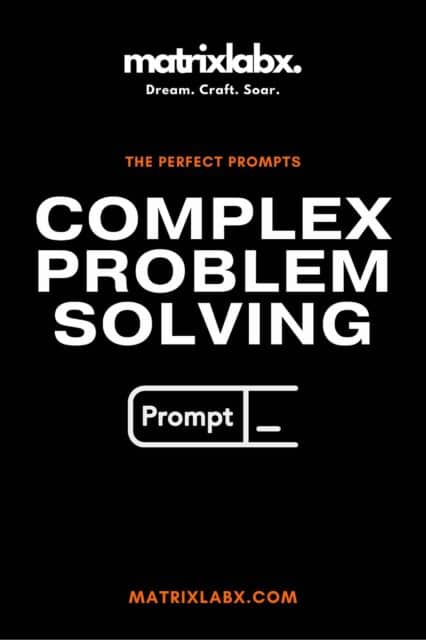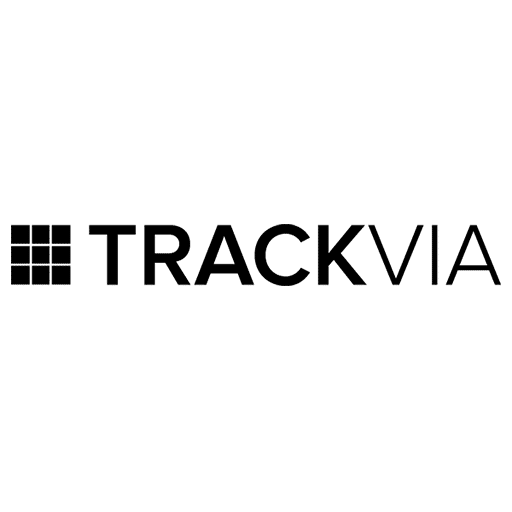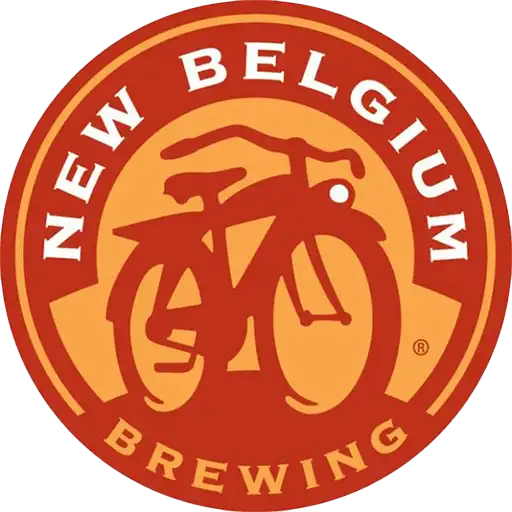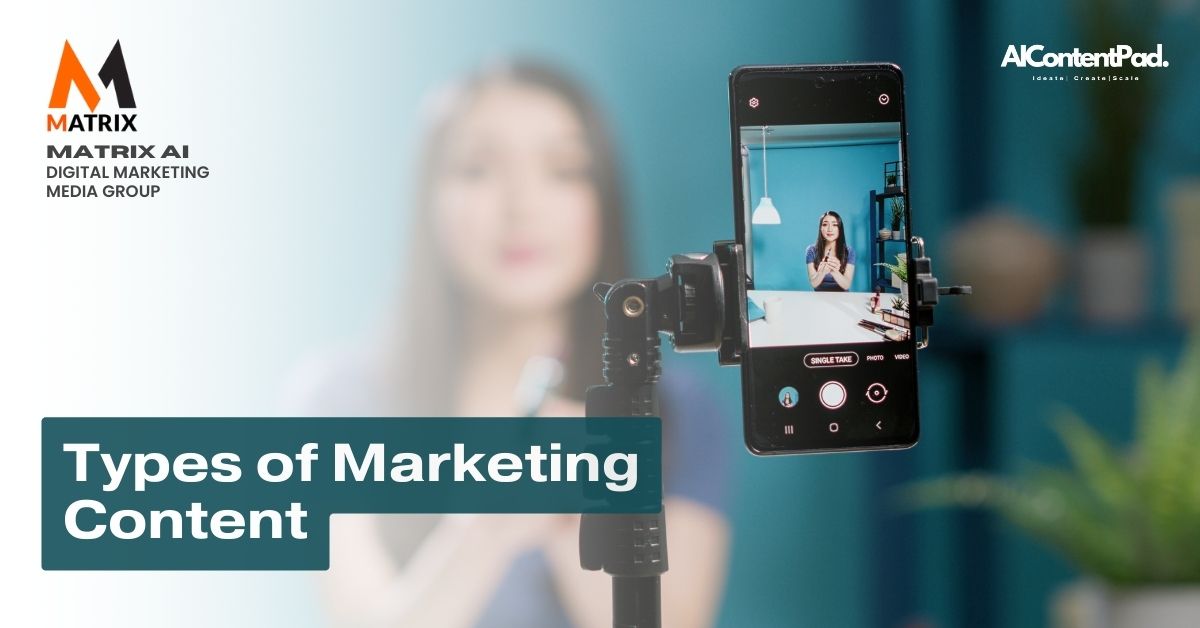The Power of Diverse Types of Marketing Content: A Guide for Marketing Managers
Why 82% of Consumers Trust Brands with Diverse Content Strategies
In today’s fast-paced digital world, marketing managers are constantly pressured to engage audiences meaningfully.
A staggering 82% of consumers trust a brand more if it consistently delivers diverse and engaging content across various platforms.
This statistic underscores the importance of a well-rounded content strategy that captures attention and builds lasting trust with your audience.
Understanding Different Types of Marketing Content
Marketing content is no longer a one-size-fits-all approach. With the rise of digital platforms, consumers seek content that resonates with them.
Here are some key types of marketing content that every marketing manager should consider:
Blog Posts and Articles
Blog posts and articles remain a cornerstone of content marketing.
They offer an opportunity to delve deep into topics, provide valuable insights, and establish your brand as an authority in your industry.
Optimizing these pieces for search engines can drive organic traffic and keep your audience engaged with fresh, informative content.
Video Content
Video content is rapidly becoming the preferred medium for many consumers.
With platforms like YouTube, TikTok, and Instagram, brands can showcase their products and services dynamically and creatively.
Video content increases engagement rates and helps convey complex messages quickly and effectively.
However, you must understand the situation and your intent to generate videos and other content.
Content That Converts: Transparent Pricing for Maximum ROI
Explore Matrix Marketing Group’s Flexible Pricing Plans for Premium Content and Marketing Solutions Tailored to Your Goals.
Addressing Concerns and Providing Transparent Information
As a marketing manager, you may have concerns about the resources required to create diverse content or the potential for mixed messaging.
Starting with a clear content strategy that aligns with your brand’s goals and values is essential.
Transparent communication with your team and stakeholders about objectives and expectations is key to a successful content plan. Agent as a Service: Faster, Cheaper, and Better Marketing

Evidence-Based Recommendations
To ensure your content strategy is evidence-based, leverage analytics tools to track engagement metrics and audience behavior.
Use this data to refine your approach, focusing on the types of content that resonate most with your audience.
Additionally, staying updated with industry trends and consumer preferences will enable you to adapt and innovate your content strategy effectively.
By understanding the importance of diverse marketing content and addressing potential concerns upfront, marketing managers can build a robust content strategy that captivates their audience and fosters trust and loyalty.
With the right approach, your brand can become a trusted voice in your industry, driving growth and success in the competitive digital landscape.
A marketing manager uses various content types across multiple channels to engage target audiences, promote products or services, and build brand awareness. Do you have a team that can get all of this done? We do, and we can help.
70% of agencies need help integrating AI solutions.
70% of agencies need help integrating AI solutions into their tech stack, citing a lack of interoperability as a major barrier. 85% of marketing agencies need more in-house expertise to manage and deploy multi-AI agent systems effectively.
Here’s a comprehensive list of the content that a marketing manager might use:
1. Written Content
- Blog Posts: Informative or thought-leadership articles to attract website traffic and boost SEO.
- Whitepapers: In-depth reports that educate or inform about specific topics.
- eBooks: Longer-form content offering comprehensive information on a subject.
- Case Studies: Success stories of how a product or service helped solve customer problems.
- Press Releases: Announcements distributed to media outlets.
- Newsletters: Regular email updates about news, promotions, and content.
- Landing Pages: Web pages designed to capture leads or drive sales.
- Email Campaigns: Drip campaigns, promotional emails, and nurture sequences.
- Product Descriptions: Detailed overviews of products and services for web or eCommerce.
- Social Media Posts: Engaging and promotional content for platforms like Facebook, Instagram, LinkedIn, and Twitter.
- SEO-Optimized Articles: Content specifically created to rank for search engine queries.
- FAQs: Answers to common customer questions.
- Internal Documentation: Brand guidelines, process documentation, and marketing strategies.
2. Visual Content
- Infographics: Visual representations of data or concepts.
- Product Photos: High-quality images showcasing products.
- Slide Decks: Presentations used for pitches or webinars.
- Social Media Graphics: Visuals optimized for platforms like Instagram or Pinterest.
- Memes: Humorous or culturally relevant visuals to engage audiences.
- Gifs: Animated images for social media or email use.
- Posters: Digital and print posters for events or promotions.
- Print Ads: Traditional print media advertisements (magazines, newspapers).
- Display Ads: Banner and other online ads with visual components.
- Brochures: Printed or digital pamphlets outlining services or products.
- Flyers: Promotional one-page documents for local marketing.
3. Video Content
- Explainer Videos: Short videos explaining a product, service, or concept.
- Product Demos: Detailed videos showcasing how a product works.
- Customer Testimonials: Videos featuring customers sharing their experiences.
- Behind-the-Scenes Videos: Footage of operations, product development, or company culture.
- Live Streams: Real-time video broadcasts on social media or other platforms.
- Webinars: Educational or promotional live or recorded video sessions.
- Video Ads: Short, targeted ads for platforms like YouTube, TikTok, or Facebook.
- Corporate Videos: Branded videos communicating the company’s vision, mission, or values.
4. Audio Content
- Podcasts: Regular audio shows discussing industry topics or thought leadership.
- Radio Ads: Traditional or digital radio commercial spots.
- Audio Clips: Short-form audio snippets for social media or ads.
- Voiceovers: Narration for video or presentation content.
- Jingles: Branded musical content used in advertising.
5. Interactive Content
- Quizzes & Polls: Engaging tools to get customers to interact with the brand.
- Calculators: Interactive tools that provide customers with instant results, such as pricing calculators.
- Interactive Infographics: Clickable visuals that engage users in exploring data.
- Surveys: Forms to gather customer feedback or opinions.
- Virtual Tours: Interactive experiences, often for real estate or event spaces.
6. Digital Ads
- Pay-Per-Click (PPC) Ads: Ads placed on search engines and paid per click.
- Social Media Ads: Sponsored content on platforms like Facebook, Instagram, and LinkedIn.
- Display Ads: Banner ads placed across various websites.
- Retargeting Ads: Ads are served to users who have previously visited the brand’s website.
7. Event & Community Content
- Event Invitations: Digital or print invites for webinars, conferences, or product launches.
- Event Recaps: Summarized event content, such as blog posts, videos, or social posts.
- Contests and Giveaways: Promotional content to generate engagement.
- Forums/Community Discussions: Branded discussions are hosted on Reddit or specialized forums.
8. Sales Enablement Content
- Sales Sheets: One-pagers that explain product features and benefits.
- Pitch Decks: Presentations designed for sales purposes.
- Proposals: Detailed offers to potential clients.
- Presentations: PowerPoint or Google Slide decks for sales or marketing pitches.
9. Technical & Data-Driven Content
- Technical Documentation: User manuals, API documentation, or product specs.
- Data Sheets: Information-heavy content, often in B2B marketing.
- Reports and Analytics: Performance tracking and analysis reports.
- Market Research Reports: Data and trends for specific industries or customer segments.
10. UGC (User-Generated Content)
- Customer Reviews: Testimonials or feedback from customers.
- Social Media Mentions: Posts where customers tag or mention the brand.
- Influencer Content: Content generated by influencers as part of a brand collaboration.
- Community Photos & Videos: Content from customers, often featuring a product in use.
11. Web Content
- Homepage Copy: Key messaging and value proposition content for a company’s main website page.
- Service Pages: Individual pages outlining specific services.
- About Pages: Story and history of the brand.
- Career Pages: Job listings and company culture information.
- FAQs Pages: Questions and answers designed to assist potential customers.
- Testimonials Pages: Dedicated page with customer feedback and reviews.
This list covers a wide range of content types that a marketing manager would use to execute a comprehensive strategy across multiple channels. Certain content types may be prioritized over others depending on the business’s needs and target audience.
Unveiling the Spectrum: Types of Marketing Content

A Comprehensive Exploration
Marketing content is the lifeblood of any successful marketing strategy.
It encompasses the diverse array of materials and formats that businesses use to communicate with their audience.
From blog posts and social media updates to videos and infographics, each type uniquely engages, informs, and converts prospects.
The Why: Purpose Drives Strategy
Understanding the ‘why’ behind each type of marketing content is crucial for marketing managers.
Successful marketing hinges on selecting the right medium to resonate with your target audience.
Blog posts and articles are perfect for establishing authority and improving SEO. Videos and infographics are excellent for quickly capturing attention and conveying complex information.
Social media posts create a platform for real-time engagement and customer interaction.
By leveraging different types of content, brands can tell their stories more effectively, nurture leads, and ultimately drive sales. Evergreen Content Creation: Boost Search Ranking
Shifting from Lead Generation to Revenue Generation: A New Era for Marketing Managers
Unlocking 67% More Revenue: The Shift Every Marketing Manager Needs to Make
In today’s fast-paced digital landscape, marketing managers are bombarded with new strategies and tools claiming to revolutionize their approach. This statistic is not just a number—it’s a call to action for marketing leaders to reevaluate their strategies and realign their efforts with the bottom line. Schedule an appointment.
The Where: Strategically Placed Content
Location is everything, not just real estate. For marketing content to make an impact, it must be strategically placed where the target audience spends their time.
Consider channels like LinkedIn for B2B content, Instagram for visually-driven brands, or YouTube for video content. Aligning your content type with the right platform ensures it reaches the intended audience and maximizes engagement.
Choosing a content and distribution strategy ultimately defines the success of a marketing campaign. Thus, wise selection and placement can transform a marketing initiative from ordinary to extraordinary.
By understanding these choices, marketing managers can harness the dynamic nature of content to drive engagement, build brand loyalty, and achieve business goals.
Tackle the High Cost of Content Production

The Problem: Staggering Expenses for Marketing Managers
In today’s competitive market, marketing managers grapple with the exorbitant costs of content production.
Until AIContentPad, the marketing manager would pay $4000 for a white paper and start at $10,000 for a video, which is $10,000 per finished minute.
Balancing budgets while striving for creative, high-quality output often seems impossible. With the increasing demand for personalized and engaging content across multiple platforms, the need for skilled writers, designers, and analysts quickly drives up expenses, consuming many marketing budgets.
This financial strain can limit growth opportunities and stifle overall marketing efforts.
The Agitation: Why High Costs Are Crippling Your Strategy
Imagine cutting corners on crucial campaigns because your budget can’t accommodate content production costs.
You compromise on content quality, impacting your brand’s image and customer engagement. Frustration builds as resources are stretched thin, leaving little room for innovation or experimentation.
This scenario is not just problematic but detrimental.
An inadequate content strategy diminishes your competitive edge, causing your brand to lag behind more resourceful competitors leveraging cost-efficient technologies.
The Solution: Transform With AI Marketing Solutions

Revolutionize Content Production and Cut Costs
Enter our cutting-edge AI marketing solutions designed to alleviate the burden of high content production costs.
Our AI tools automate content creation processes, generating personalized content faster and more efficiently than ever.
Integrating AI into your marketing strategy drastically reduces expenses associated with manual content production while maintaining and often enhancing content quality.
Spark curiosity by exploring how AI can unlock new possibilities for your brand, freeing up resources for more strategic initiatives and innovation.
The Skill Gap: Why 85% of Marketers Are Not Ready
The Skill Gap: Why 85% of Marketers Are Not Ready highlights the urgent need for upskilling in a rapidly evolving digital landscape. Advanced technologies like AI, data analytics, and automation are outpacing traditional marketing expertise, leaving most professionals unprepared to adapt and compete effectively.
With our AI marketing solutions, you control costs and position your brand for transformative growth in the ever-evolving digital landscape.
Embrace the future of content marketing and unleash AI’s potential to drive your marketing efforts to new heights.
The Art of Digital Storytelling

George Schildge, Content Guru at Matrix
“Crafting compelling marketing content is like weaving an intricate story. Only the best storytellers seamlessly engage audiences.
Video marketing, for instance, combines visuals and narrative, captivating viewers, unlike any other medium. I tell clients to think like Shakespeare, make their audience laugh, cry, and reflect—all in one go.
The trick is integrating keywords without sacrificing the story’s soul, appealing to search engines and human readers.
I firmly believe that even the most sophisticated marketing strategies falter without a captivating story at the core.
It’s heartening to see interactive and user-generated content rise, as these formats encourage participation and shared experiences, leading to genuine brand loyalty.”
Applications of AI in Marketing
Generative AI: Tools like ChatGPT, Gemini, and OrchestraAI are being utilized for content creation, with 42% of marketers employing AI for keyword research and 39% for social media and email marketing. Learn More.
The Importance of Authenticity in Content Marketing
Sandra Lee, Marketing Manager at Innovate Now
“In the era of information overload, authenticity differentiates one brand from another. Blog posts, whitepapers, and eBooks allow brands to tell their story genuinely and transparently.
As a marketing manager, I’ve found that consumers are increasingly attuned to inauthentic tones and overly polished narratives.
They crave raw, relatable content that speaks to their everyday experiences. This is why educational content, like how-to guides and webinars, is highly effective. It positions brands as trustworthy thought leaders.
I encourage clients to align their content with their core values. When done right, this attracts and retains the right audience, creating a community around shared beliefs.”
Navigating the Shift Toward Short-Form Content
Michael Chen, Digital Marketing Specialist at Click Wave
“The growing popularity of platforms like TikTok and Instagram Reels is undeniable, and the impact on marketing content is profound.
Short-form content caters to shrinking attention spans, punctuating the importance of crafting bite-sized, impactful narratives. As a marketing specialist, I’m fascinated by how this has revolutionized brand communication strategies.
It’s an art to capture attention and convey a complete message within seconds. Marketers are now challenged to be incredibly creative and data-driven—using metrics to fine-tune and iterate rapidly. The future is about making memorable content moments, and, as I often say to budding marketers, it’s about creating a spark that lingers long past that initial view.”
Unveiling the Power of Diverse Marketing Content
In dynamic digital marketing, diversifying content types is a paramount strategy for capturing and retaining audience interest.
Savvy brands understand that varied content caters to differing tastes and enhances engagement.
Here’s how three under-the-radar brands successfully leverage this tactic.
1. Infographics: Visual Storytelling by Greenleaf Design
Greenleaf Design, a budding eco-friendly interior design firm, excels in using infographics to simplify complex ideas about sustainable living.
Their vibrant visuals break down environmental benefits and the aesthetic appeal of green design choices. By employing eye-catching graphics and easy-to-digest data,
GreenLeaf seamlessly educates and entices potential clients, boosting their credibility and client base.
2. Video Content: Engaging Narratives by UrbanDrift Clothing
UrbanDrift Clothing, a niche apparel brand, captivates audiences with compelling video content.
They authentically convey their brand’s ethos and creative process by showcasing short documentaries and behind-the-scenes footage.
These videos foster a strong emotional connection with viewers who feel part of UrbanDrift’s journey.
This strategy increases brand loyalty and sparks organic social media sharing, expanding their reach.
Applications of AI in Marketing
Generative AI: Tools like ChatGPT, Gemini, and OrchestraAI are being utilized for content creation, with 42% of marketers employing AI for keyword research and 39% for social media and email marketing. Learn More.
3. User-Generated Content: Building Communities with TechChic Gadgets
TechChic Gadgets, a trailblazer in tech accessories, harnesses the power of user-generated content to create a community-driven brand.
They encourage users to share photos and reviews of TechChic products in action, which they frequently feature on their social platforms.
This approach showcases diverse product applications and builds trust and authenticity, as potential customers gain genuine insights from peers rather than the brand itself.
By deftly integrating various types of content, these brands demonstrate how diversifying media can communicate core messages effectively and stimulate audience curiosity and engagement, ensuring a robust digital presence.
Dive into the Matrix of Marketing Content
In the ever-evolving digital marketing landscape, adapting strategies to the diverse types of marketing content is crucial.
Let’s harness the power of structure and innovation by engaging with an agile Matrix approach that categorizes and maximizes content potential.
Start this journey by understanding the connections between content types, such as blogs, infographics, videos, and podcasts.
Your content is created in a snap with AI agents like AIContentPad, AIProdPad, and AIBrandPad.
Exploring Content Dimensions
Begin with the vertical axis: the purpose of your content.
Are you aiming to inform, entertain, inspire, or persuade? Each purpose dictates the format and tone with which you should engage your audience.
For instance, informative content might be detailed articles or how-to guides that establish your brand as an authority.
Examining the Horizontal Spectrum
Shift focus to the horizontal plane: distribution channels. Each type of content finds its perfect home on different platforms.
Visual-heavy infographics thrive on Instagram, while in-depth industry insights work well on LinkedIn.
Aligning each content with its rightful channel ensures maximum reach and engagement, solidifying your brand’s online presence.
Unlocking Synergies and Tracking Success
Finally, explore how these dimensions intersect. Identify synergies between varied content types and distribution strategies to amplify their impact.
For instance, combine the storytelling appeal of videos with the motivational pull of social media stories.
Meanwhile, monitor analytics to track effectiveness and adjust your matrix for continuous improvement—a true reflection of a dynamic marketing strategy.
Discover the Rich Tapestry of Marketing Content
Marketing content is diverse and dynamic, driving engagement and building brand identity.
From blog posts to podcasts, the myriad forms of content play distinct roles in resonating with diverse audiences.
The core aim is positioning a brand at the forefront of consumers’ minds by providing valuable and engaging insights.
Explore Diverse Mediums
At the heart of digital marketing are enduring staples like blog posts and articles that excel in SEO performance by answering customer queries and establishing expertise.
Meanwhile, infographics leverage visual storytelling to present data with clarity and creativity, enhancing recall.
The rising star, podcasts, offers brands a chance to connect on a more personal level. They effortlessly fit into consumers’ routines while delivering entertaining yet informative content.
Transform with Emerging Trends
Video content is unparalleled in conveying complex messages quickly, with YouTube videos, IGTV, and TikToks unlocking virality through visually captivating storytelling.
Further, interactive content like quizzes and polls deepens engagement by offering participatory experiences.
In a world craving genuine connection, user-generated content and live streams bring authenticity and immediacy, fostering deep audience-brand bonds.
Immerse yourself in the strategic depth of marketing content and discover how embracing a multipronged approach can elevate your brand, drawing in diverse audiences while cementing an enduring digital presence.
Witness how creativity interlaces with a commercial strategy to craft memorable, impactful narratives.
The digital marketing landscape is constantly evolving, driven by technological advancements and changing consumer behaviors.
Content marketing remains a cornerstone of digital marketing strategies and continues adapting to the evolving landscape.
Embracing new formats, platforms, and technologies is essential for marketers to capture attention, engage audiences, and build lasting customer relationships.
Conclusion
The future of content marketing lies in harnessing the power of data and artificial intelligence to create personalized and engaging customer experiences. By leveraging data-driven insights, marketers can understand their audience’s preferences and tailor their content accordingly. AI can assist in generating content ideas, optimizing content for search engines, and automating content creation tasks, allowing marketers to focus on developing high-quality, engaging content that resonates with their target audience.
As the digital landscape continues to evolve, content marketers must remain agile and adaptable.
By embracing new technologies, understanding their audience, and creating compelling content, marketers can position their brands as thought leaders, build strong customer relationships, and drive business growth.







